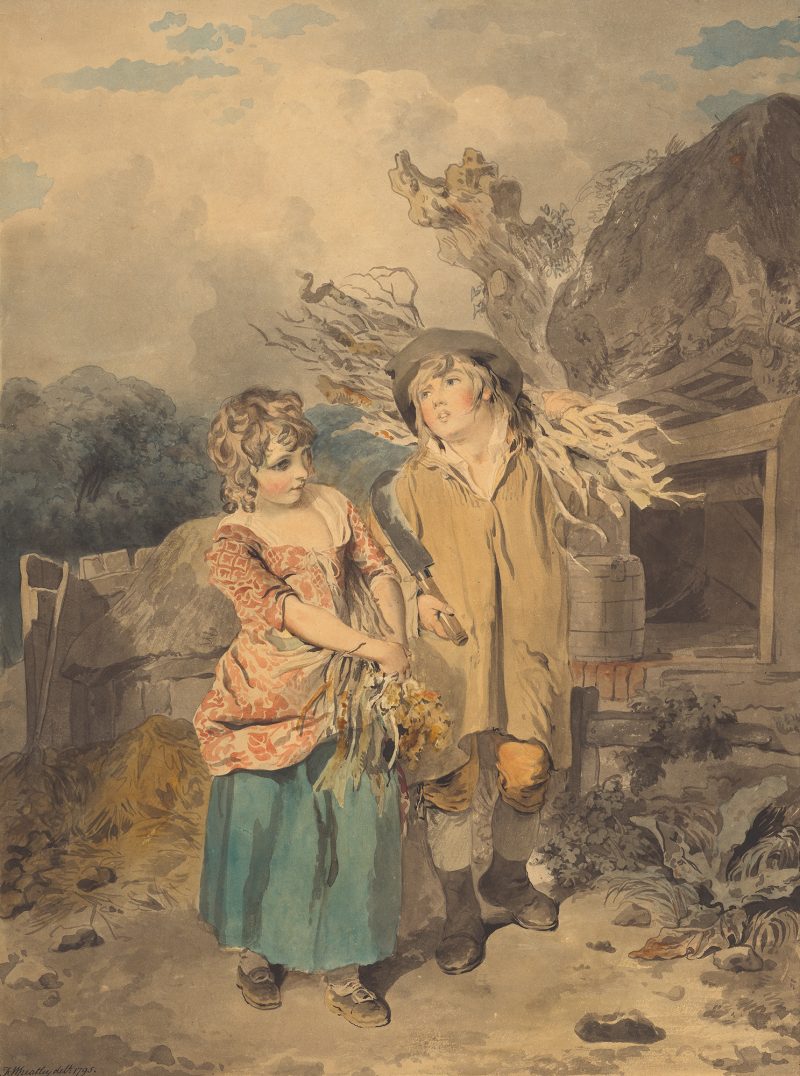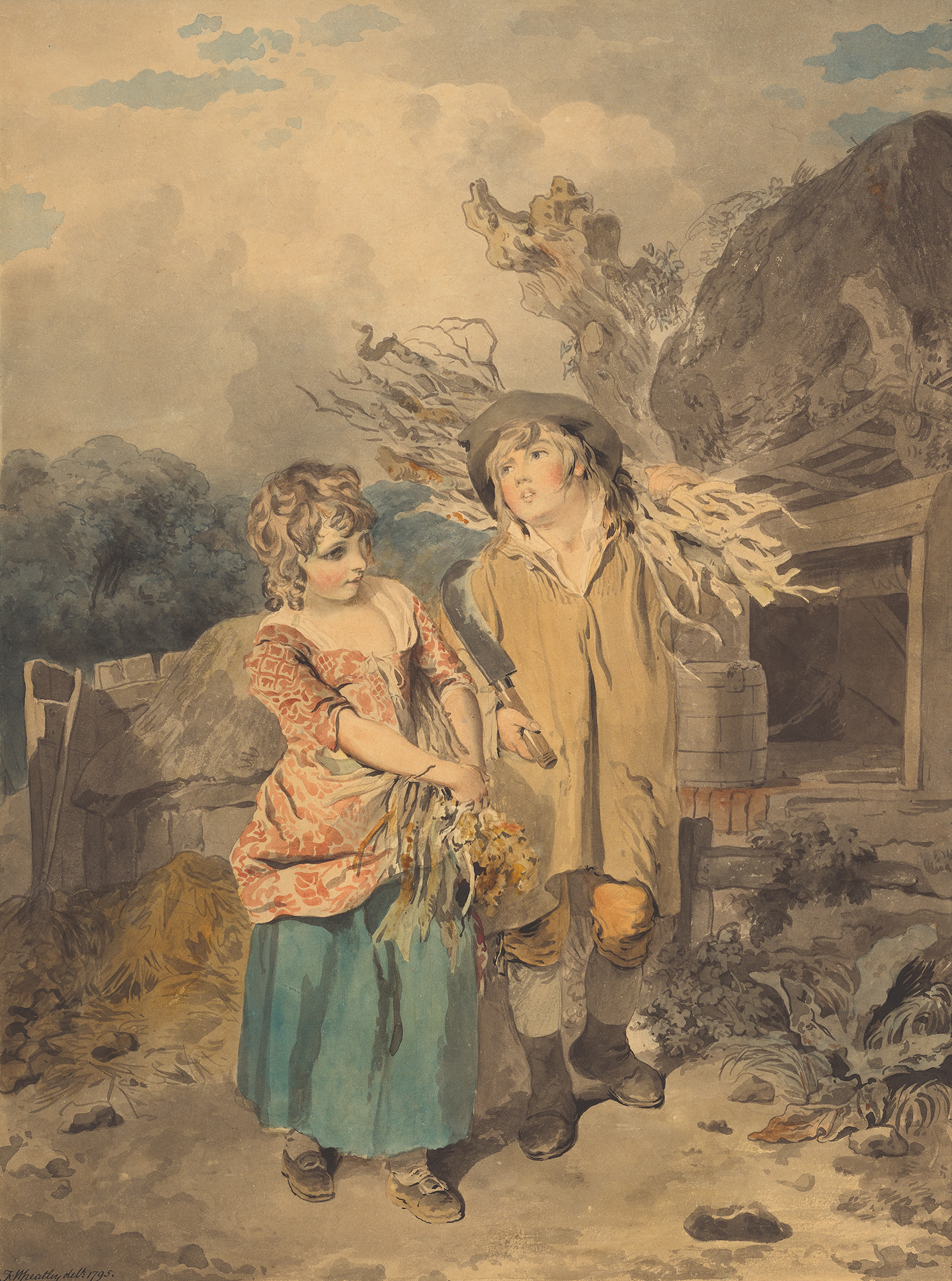
Country Boy, A; and Girl Returning Home with Firewood
Wheatley, Francis
1795
Artwork Information
-
Title:
Country Boy, A; and Girl Returning Home with Firewood
-
Artist:
Wheatley, Francis
-
Artist Bio:
British, 1747–1801
-
Date:
1795
-
Medium:
Ink, watercolor, and graphite on paper
-
Dimensions:
18 3/4 x 14 inches
-
Credit Line:
Wichita Art Museum, Museum purchase, Virginia and George Ablah Fund
-
Object Number:
1986.21
-
Display:
Not Currently on Display
About the Artwork
This engaging watercolor painting titled A Country Boy and Girl Returning Home with Firewood was executed in 1795 by the British artist Francis Wheatley. Like many works of the period, this piece is most fundamentally a carefully delineated outline drawing with all areas neatly filled with pale color washes. Wheatley was widely recognized as an outstandingly competent draftsman and his skill is clearly evident in the crisp handling of all forms and especially of the figures of the young boy and girl who are given foreground prominence in the center of the composition.
The soft tones used here, and the calm and idyllic rustic setting were qualities which theoreticians of the period associated with what they called “the beautiful”. At the same time, the little cottage with its thatched roof, the irregular dirt path where the children walk, the old wooden bucket at the water well, and the loosely bundled firewood carried by the children were considered appropriate devices for a picturesque setting. What is so interesting is that here as in many of Wheatley’s paintings, it is the primitive simplicity of rural life that the artist glorifies in his choice of theme, a theme flavored with extreme sentimentality, especially evident in the innocent expressions and the somewhat affected poses of the children and which is further accented by the delicate color tints used throughout the composition.
When seen through the eyes of today’s viewers, such sentimentality is regarded as artificial, contrived and saccharine. Yet when this painting was executed, artists like Wheatley, perhaps unconsciously, were simply sensitively documenting their response to societal changes which they were quick to recognize and which were just beginning to take place as a result of industrial and technological changes then in progress. For ultimately the self-sufficiency of the traditional lifestyle of many small villages would vanish as large factory towns began to rise. From that standpoint, both the theatrical effects and the expression of nostalgia suggested here would seem premonitory of the widespread changes that would eventually be experienced.
Francis Wheatley was born in 1747 in Covent Garden, London. He studied art about 1765 at Shipley’s School, one of London’s finest schools of drawing at the time. In 1769, he attended the Royal Academy. Throughout his career his works were highly admired, and many were engraved for publication in widely circulated magazines. He was elected an associate member of the Royal Academy in 1790 and a full member in 1791. Yet the 18th century was a time when watercolor was considered appropriate primarily for producing preliminary sketches for oil paintings. As a result, Wheatley suffered serious financial hardships and in 1793 became bankrupt. He died in London in 1801.
